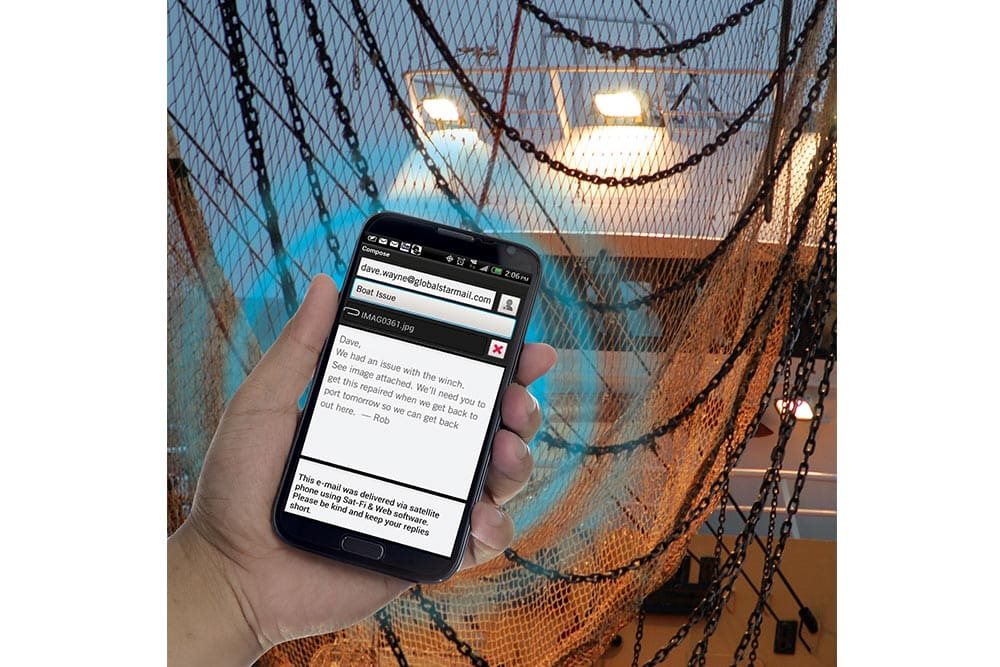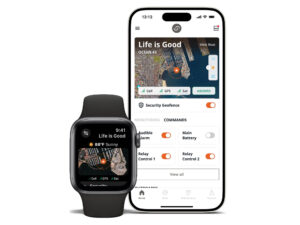
Sat-Fi Blog Photo
In my November/December issue electronics column, I wrote about the recent marriage of smartphones and satellites, which should provide for easier, more-familiar communication options offshore. In the United States, at press time, Globalstar was shipping its Sat-Fi and Iridium its GO!: Both act as go-betweens to relay data, using a Wi-Fi connection, to and from smartphones and tablets.
Before I wrote about the units, Globalstar offered to loan me a Sat-Fi so I could see for myself how this system operates. Since I have a small, coastal bay boat and fish in sight of shore at all times, I opted for a simple land-based test scenario using my vehicle and an open parking lot on Jekyll Island, Georgia. Yes, on land, I would still retain a cell signal, but because Sat-Fi employs apps to communicate, the system would simply bypass my cell connection.
I chose this beach location, because the satellite antenna that comes with the unit must have an open view of the sky (as would any satellite device). Before I headed to the test site, though, I set up and activated my account, taking the following steps:
- I downloaded and installed the two Sat-Fi apps — one for voice and one for data — on my iPhone 5s, then activated and registered my account on the Globalstar website (via my laptop) using a special code provided to me by Globalstar. During this process, I established a username and password and an email address on globalstarmail.com. (The system cannot, at this time, be configured to send/receive emails to and from your personal or work email account.)
- On my iPhone, I opened the data and voice apps, and completed user settings.
I drove the few miles east from my home to the coast and set up the Sat-Fi terminal. I attached the small Wi-Fi antenna to the back of the unit and then plugged in the satellite antenna and power cord. I placed the satellite antenna on top of my vehicle. I plugged the power cord into the 12-volt receptacle on my car.
After a few minutes, the terminal achieved a steady satellite connection — signified by a constant blue light. I turned on Wi-Fi in my iPhone and selected the Sat-Fi network. I entered a default password. From there, I took the following steps to make a voice call, send emails and texts and post a text message to Facebook:
- I launched both Sat-Fi apps on my iPhone.
- In the Voice app, I opened my Contacts list and placed a call to Sport Fishing‘s managing editor. After a brief pause, I heard the line ring. The voice mail came on, sounding clear and precise. I left a message. A quick audio clip from that message is embedded below. It sounds like a fairly typical cell, even land-line, connection.
Our managing editor noted that her caller ID did not show my cell phone number but rather the number assigned to my Sat-Fi account. The same thing happened when I sent texts. After the call, I tested other Sat-Fi features.
- In the data app, I composed text emails and sent them to the outbox. I selected Send/Receive Mail and Sat-Fi initiated a data connection. (A dedicated send/receive command means that a data connection doesn’t remain open at all times, running up charges.) The email send took mere seconds.
- I had already configured my Facebook account to accept posts from the satphone using “mobile settings.” (Globalstar provides a complete, step-by-step manual for connecting all your social-media accounts.) I selected social media in the Sat-Fi app, composed a text post and sent it to the outbox. It took moments to send as well.
- Finally, I selected the Chat icon in the Voice app and sent a text message. Text messages send in real time and responses come in immediately with an alert when the phone is connected.
In my final test, I connected my iPhone to the Internet using the satellite connection. Data-connection speeds are currently too slow among all satellite-communication providers for users to spend much time surfing. However, mobile sites do load a little more quickly these days — taking several minutes.
Sat-Fi also comes with an SOS service — using the 911 system within the United States and Canada — but, of course, I couldn’t test that.
Globalstar says that the Sat-Fi product should appeal to anglers and boaters who prefer to use their smartphone platforms rather than buying handheld or fixed-mount satphones, though the latter two will still remain viable markets. Sat-Fi hardware costs $999 with monthly usage plans starting around $39.99 (unlimited plans cost about $150 a month).
This smartphone connection is obviously prime for its time, with so many Americans — anglers and landlubbers — electronically entwined with their devices. After initial setup, Sat-Fi is fairly effortless and as dependable as any other satellite connection you might purchase.
I can’t imagine it will be too long before smartphones simply come preset for satellite use and all data connections move at the speeds we currently enjoy on land.








